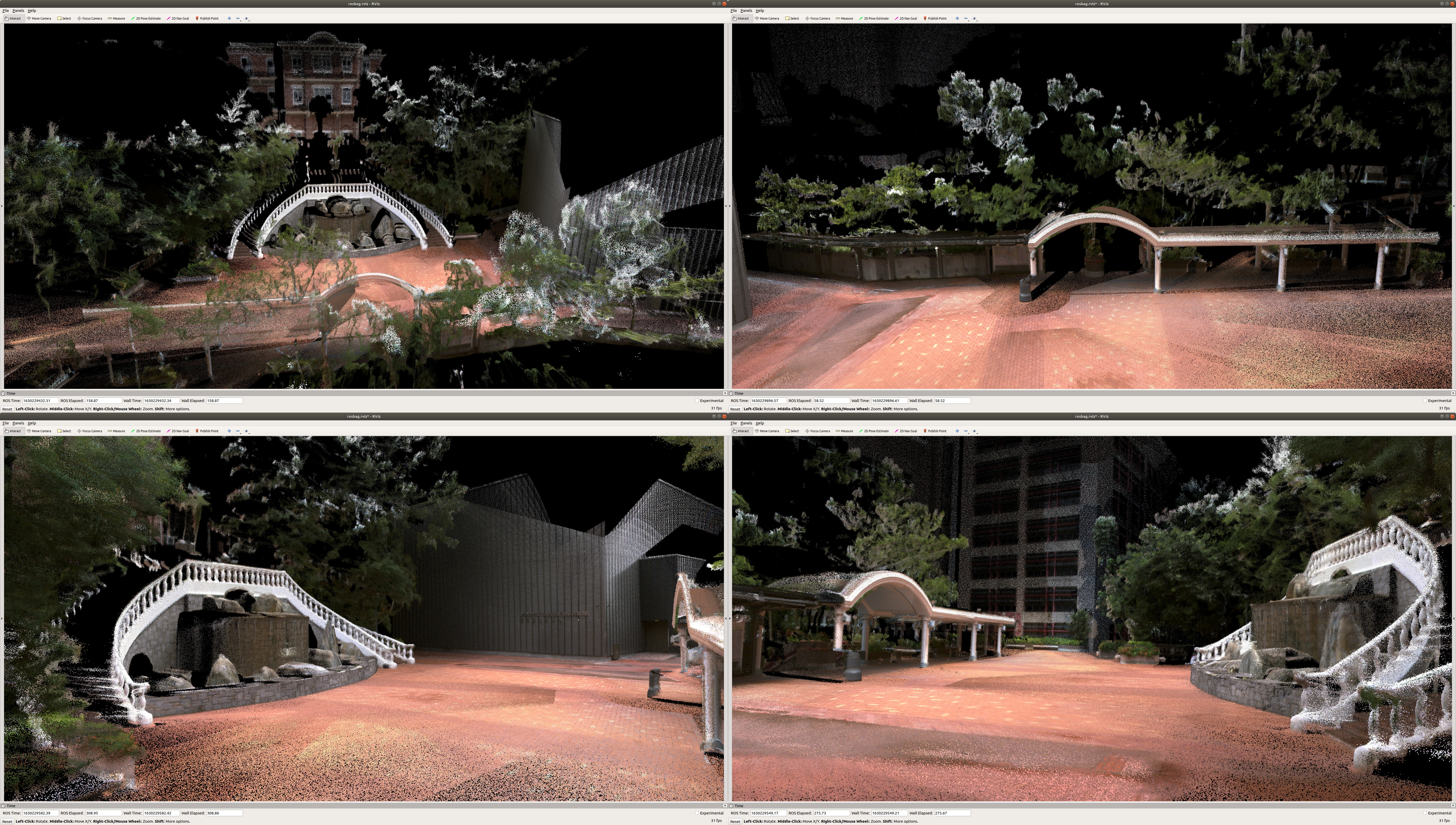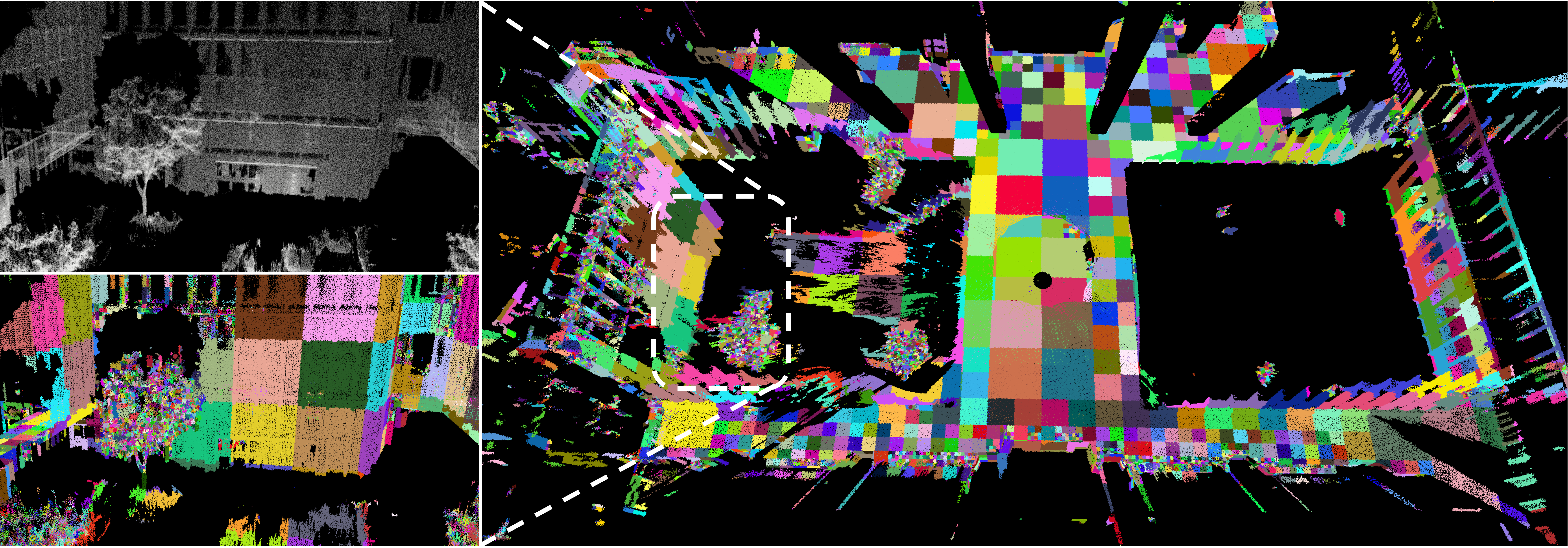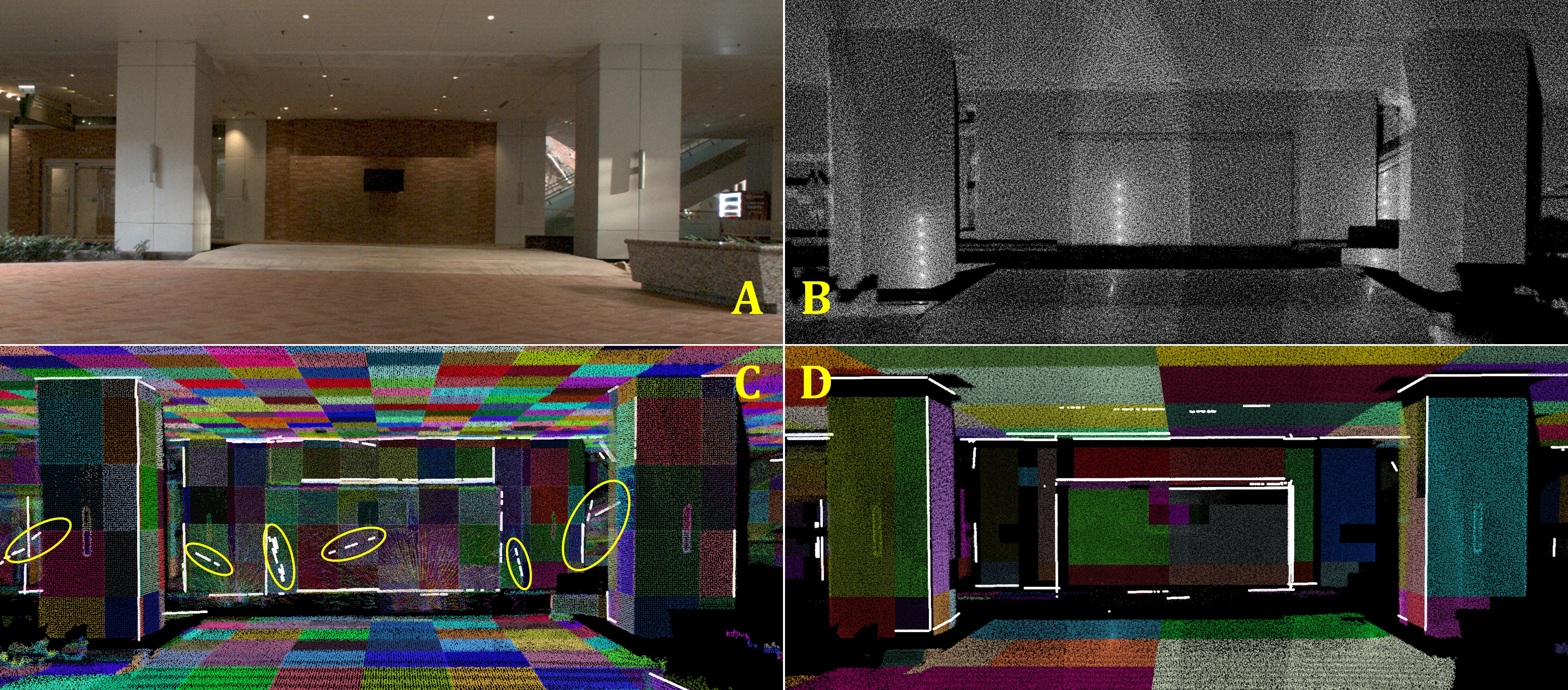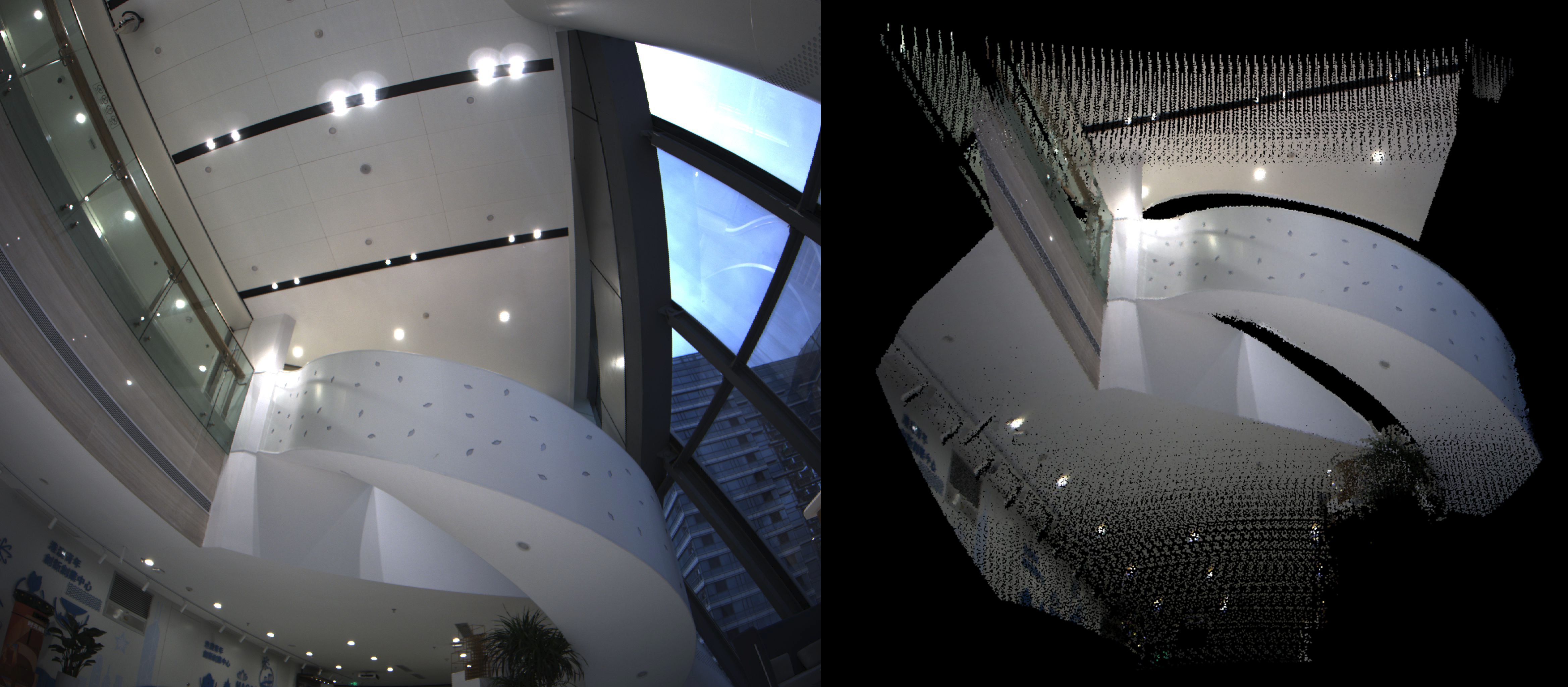Targetless Extrinsic Calibration of Multiple Small FoV LiDARs and Cameras using Adaptive Voxelization
Our journal paper is available on IEEE TIM. The pre-release code has been updated. Our experiment video is available on YouTube and Bilibili. Please consider citing our paper if you find our code useful.
@ARTICLE{9779777,
author={Liu, Xiyuan and Yuan, Chongjian and Zhang, Fu},
journal={IEEE Transactions on Instrumentation and Measurement},
title={Targetless Extrinsic Calibration of Multiple Small FoV LiDARs and Cameras Using Adaptive Voxelization},
year={2022},
volume={71},
number={},
pages={1-12},
doi={10.1109/TIM.2022.3176889}
}
In this paper, we propose a fast, accurate, and targetless extrinsic calibration method for multiple LiDARs and cameras based on adaptive voxelization. On the theory level, we incorporate the LiDAR extrinsic calibration with the bundle adjustment method. We derive the second-order derivatives of the cost function w.r.t. the extrinsic parameter to accelerate the optimization. On the implementation level, we apply the adaptive voxelization to dynamically segment the LiDAR point cloud into voxels with non-identical sizes, and reduce the computation time in the process of feature correspondence matching.
 Fig. 1 Dense colorized point cloud reconstructed with LiDAR poses and extrinsic calibrated with our proposed method.
Fig. 1 Dense colorized point cloud reconstructed with LiDAR poses and extrinsic calibrated with our proposed method.
In both LiDAR-LiDAR and LiDAR-camera extrinsic calibration, we implement adaptive voxelization to accelerate the feature correspondence matching process. The point cloud map is dynamically segmented into voxels with non-identical sizes, such that only one plane feature is contained in each voxel. This process sufficiently saves the execution time of k-d tree searching from our previous work1 (see Fig. 2) and work2 (see Fig. 3).
 Fig. 2 Adaptive voxelization in LiDAR-LiDAR extrinsic calibration.
Fig. 2 Adaptive voxelization in LiDAR-LiDAR extrinsic calibration.
 Fig. 3 Adaptive voxelization in LiDAR-camera extrinsic calibration. A) real-world image. B) raw point cloud of this scene. C) voxelization of previous work where the yellow circles indicate the false edge estimation. D) edges extracted with our proposed method.
Fig. 3 Adaptive voxelization in LiDAR-camera extrinsic calibration. A) real-world image. B) raw point cloud of this scene. C) voxelization of previous work where the yellow circles indicate the false edge estimation. D) edges extracted with our proposed method.
Our code has been tested on Ubuntu 16.04 with ROS Kinetic, Ubuntu 18.04 with ROS Melodic and Ubuntu 20.04 with ROS Noetic, Ceres Solver 1.14.x, OpenCV 3.4.14, Eigen 3.3.7, PCL 1.8.
Clone the repository and catkin_make:
cd ~/catkin_ws/src
git clone git@github.com:hku-mars/mlcc.git
cd .. && catkin_make
source ~/catkin_ws/devel/setup.bash
The parameters base LiDAR (AVIA or MID), test scene (scene-1 or scene-2), adaptive_voxel_size, etc., could be modified in the corresponding launch file. We also provide the original rosbag files (scene-1 and scene-2) for your reference.
Step 1: base LiDAR pose optimization (the initial pose is stored in scene-x/original_pose)
roslaunch mlcc pose_refine.launch
Step 2: LiDAR extrinsic optimization (the initial extrinsic is stored in config/init_extrinsic)
roslaunch mlcc extrinsic_refine.launch
Step 3: pose and extrinsic joint optimization
roslaunch mlcc global_refine.launch
roslaunch mlcc calib_camera.launch
We have added code for single LiDAR-camera extrinsic calibration using adaptive voxelization, which supports both pinhole and fisheye camera models. The FISHEYE macro is defined in calib_single_camera.hpp. You can try our provided fisheye camera data.
roslaunch mlcc calib_single_camera.launch
 Fig. 4 Extrinsic calibration of the fisheye camera and LiDAR in a single scene using adaptive voxelization. Left: distorted image. Right: colorized point cloud.
Fig. 4 Extrinsic calibration of the fisheye camera and LiDAR in a single scene using adaptive voxelization. Left: distorted image. Right: colorized point cloud.
To test on your own data, you need to save the LiDAR point cloud in .pcd format. Please only collect the point cloud and images when the LiDAR (sensor platform) is not moving for optimal precision (or segment them from a complete rosbag). The base LiDAR poses and initial extrinsic values shall also be provided (in tx ty tz qw qx qy qz format). These initial values could be obtained by general SLAM and hand-eye calibration algorithms.
You may need to modify the parameters voxel_size (adaptive voxel size), feat_eigen_limit (feature eigen ratio), and downsmp_sz_base (downsampling size) for LiDAR-LiDAR extrinsic calibration to adjust the precision and speed. You need to change the corresponding path and topic name in the yaml files in the config folder.
Currently, we separate the LiDAR extrinsic calibration process into three steps for debug reasons. In future release, we wish to combine them together to make them more convenient to use.
The source code is released under GPLv2 license.
We are still working on improving the performance and reliability of our codes. For any technical issues, please contact us via email xliuaa@connect.hku.hk and xy19980205@outlook.com.
For commercial use, please contact Dr. Fu Zhang fuzhang@hku.hk.